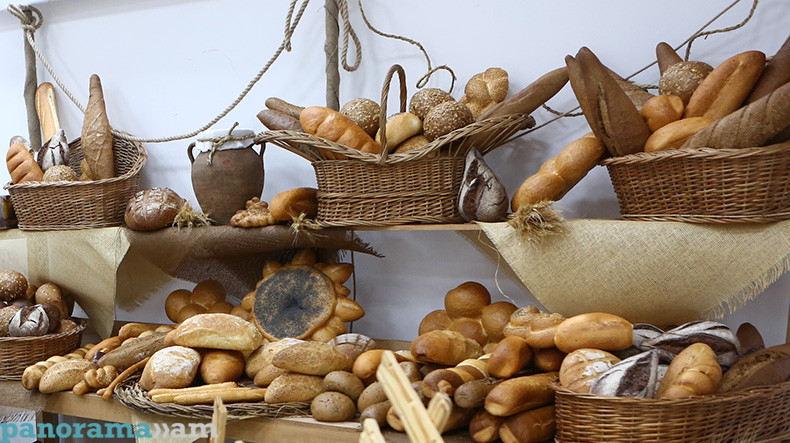
Where are bread eaters? Bread production keeps dropping in Armenia
Bread and flour production volumes continue dropping in Armenia, according to the latest figures released by the National Statistical Committee.
Armenia produced 2.4 percent less bread from January to August 2018 compared to the same period last year.
The first eight months of this year also saw a sharp decline in flour production, which cut down by around 30 percent to some 76,023 tons.
Speaking to Panorama.am, Director of Sevan Bakery Ashot Avetisyan said his factory’s bread output has not declined yet, but is expected to drop in autumn months, linking it to mass home bread-baking typical to the period.
According to the director, in recent months many in the capital Yerevan have also turned to handmade bread. “People try to save money in this way,” he says.
In parallel to low breadmaking volumes, production of lavash, traditional Armenian thin bread, has risen in the country conditioned with its increased consumption.
“I guess people have realized that the best bread type is lavash, which has higher calorific value: 1 kg lavash is equal to 1,5 kg bread,” he said.
Speaking about bread prices, Avetisyan refuted claims that lavash is more expensive than other bread types. “1 kg lavash is priced at 450-470 drams, while 1 kg bread – at 450-500 drams,” he said.
Economist Vahagn Khachatryan links falling bread production volumes with a decline in population numbers.
“The lower the population, the lower the consumption and, therefore, production volumes,” he told Panorama.am.
The economist says bread production could also cut down if Armenia saw a strong economic growth, which would boost people’s buying capacity to further lead to lower bread or other flour-made products consumption in their daily diet.
“But, obviously, it is not the case here; population is decreasing, so bread and flour production is falling. There is no other explanation here. We can’t state that people have started to consume healthier food in Armenia, it does not refer to our country,” he said.
Meantime, the economist states declined bread output cannot also be conditioned with people’s reduced buying power.
“Bread and potato are leading food types in lower-income countries like ours, so the talk cannot go about low consumption here. Today, bread is the most affordable food,” he said.
The economist pointed to the migration issue persisting in the country, calling on the government to implement serious programs in this regard given its negative impact on demography.
“Even the experts state that deaths will outnumber births in two years in Armenia. This has always been on the agenda, and I believe the government will draw appropriate conclusions and come up with solutions,” he said, pointing out to immigration as the only tool to handle the issue.
The economist also pointed to misleading statistics as a possible reason behind Armenia’s decreased bread production, questioning their reliability.
Newsfeed
Videos






























